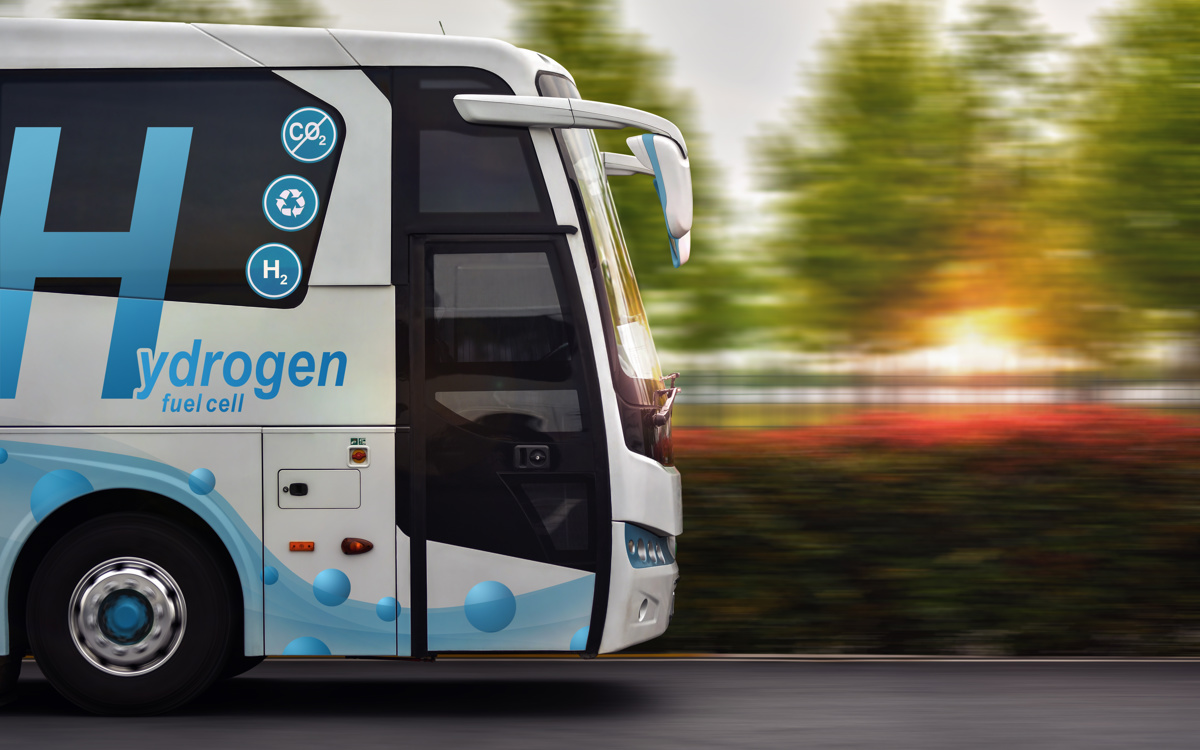
CASE STUDY: Optimising the design of a composite hydrogen pressure vessel
Addressing the challenge
As hydrogen has emerged as one of the most promising solutions for achieving net-zero carbon emissions by 2050, the design of pressure vessels for transport and storage has been drawing increasing interest within industry.
The National Composites Centre (NCC) is advancing the knowledge required to establish a dynamic UK supply chain, investing in hydrogen pressure vessel research and development to seed manufacture in the
UK, progressing the technology to help it to remain competitive in the future. It is also part of the High Value Manufacturing (HVM) cross-Catapult Hydrogen Innovation Initiative (HII). This collaboration brings together the strengths and capabilities of the Catapult innovation centres to support growth in the UK hydrogen supply chain, overcome technology and integration challenges, and to establish an effective UK hydrogen infrastructure.

As part of the NCC led Digital Engineering Technology & Innovation (DETI) and Hydrogen programmes, Multi-Disciplinary Optimisation (MDO) has been applied to the design of a Type IV composite hydrogen pressure vessel, exploiting the benefits that digital design technologies can enable.
The design of composite pressure vessels is concerned with four main aspects: structural performance, manufacturing, weight, and cost. Among the constraints, the design must meet a minimum burst pressure, a minimum fatigue life, and a maximum permeance rate, typically prescribed by regulatory codes. Design objectives include the maximisation of the hydrogen to tank weight ratio and the minimisation of cost to make the product competitive in the marketplace. The sustainability potential of materials and manufacturing processes used should also be considered early in the design process.
Following an aspect-based decomposition of the system, setup of the pressure vessel MDO involved the identification of the analysis modules and software tools required to evaluate the product performance against constraints and objectives. A data structure matrix was used to map the relationship, or coupling, between the analysis modules and support the definition of a process flow for the optimisation of the pressure vessel.

A design space optimisation platform was used to conduct the MDO exercise. Previous research undertaken within the DETI programme involved the assessment of a range of commercial industry software available. HEEDS™ MDO, a design space exploration and optimisation software from the Simcenter™ portfolio produced by Siemens Digital Industries Software, was the platform selected for the implementation of this MDO process.
Fifty designs were evaluated in less than two hours and an optimal solution was discovered among twenty-three feasible designs, i.e. designs that satisfied all the constraint requirements. It is worth noting that a traditional design approach typically leads to a feasible design, which is not necessarily the optimum one.
Further effort can be required to identify the optimum design. Finding the optimum design of a complex system such as a composite hydrogen pressure vessel was the goal of this proof-of-concept MDO study. Automating the design process identified the optimum design five times faster than a traditional design approach. This achieved the goal and significantly reduced the risk of human error in the process of data transfer. With the UK looking to position itself as a hub for agile, high-tech manufacturing, MDO presents an enormous opportunity to substantially improve product design, development, and manufacturing time to market.

MDO of the hydrogen pressure vessel was a proof-of-concept project to develop an understanding of the steps involved in setting up an automated multi-disciplinary analysis, to demonstrate the concept, viability, and benefits of the approach. The process can be applied to other products, from composite hydrogen pressure vessels for different applications to composite cryogenic tanks, by adapting the automated design process to quickly explore and optimise designs that address different objectives, under a different set of constraints. Linked to this, the NCC is also focused on integrating the MDO process flow with CAD-CAM modelling to enable the automatic generation of machine code for manufacture.
The hydrogen pressure vessel test case successfully demonstrated the application and benefits of design automation and MDO, laying the foundation for future applications. MDO offers a step-change in design
engineering and can significantly reduce product development and time to market. It provides manufacturers with a process that can be easily adapted to meet new product and market requirements, offering a level of agility that will drive innovation, enable competitive advantage and engineering leadership in the global competitive marketplace.
